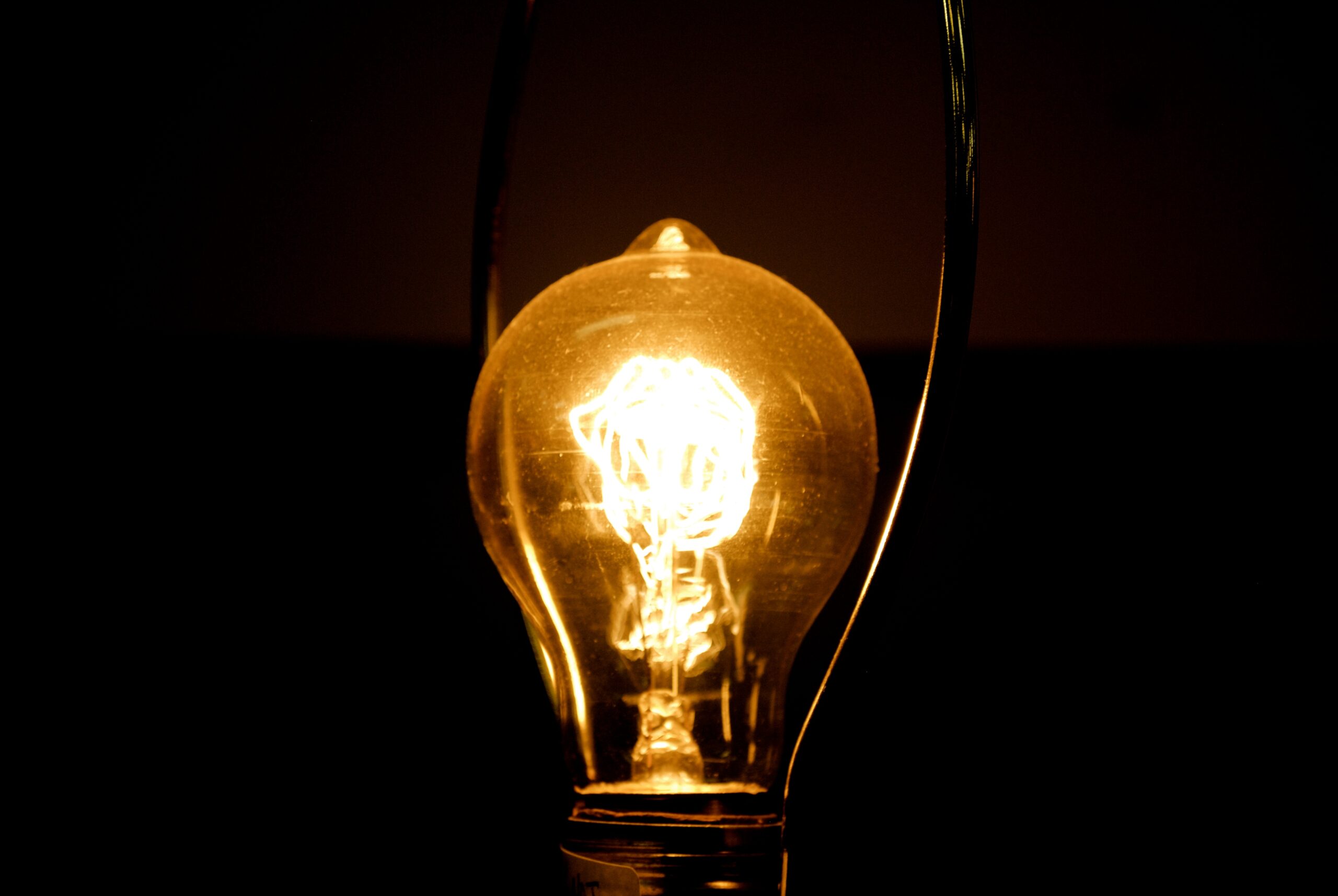A lightbulb moment for obesity research

We are currently facing an obesity epidemic that has developed at an alarming rate over recent decades, with one in four UK adults now classed as obese. So what is it about our modern lifestyles that is making us fat? If we asked 100 people, the top answers might include fast food, sugary drinks, sedentary office jobs, or even increased car ownership. However, there is one aspect of modern life that might not even make the list, but which new research suggests may be making us fatter: the light bulb! That’s right – according to recent research, artificial lighting may in fact be a key contributing factor to obesity.
The use of artificial light has increased dramatically since the early 1800s as it has fallen in price. Today with cheap, clean light at the flick of a switch, artificial lighting has become a central part of our modern lifestyle, and something that we take for granted. This lighting revolution has important implications for how we live our daily lives, allowing us to work, socialise and eat late into the night. However, whilst this increases productivity by allowing us to continue activities after sunset, artificial lighting may also have hidden costs for our health.
Dr Cathy Wyse and her colleagues at the University of Glasgow are among the researchers investigating how our modern lifestyles can fight against our bodies’ natural daily rhythms, creating what they call ‘circadian desynchrony’ 1. This occurs when our internal circadian clock, which controls daily rhythms in sleep-wake patterns and alertness, conflicts with our external environment. A more obvious example of circadian desynchrony is jet lag following a long flight, when the body’s internal clock is out of sync with the destination’s new time zone. Anyone who has experienced jet lag will know that circadian desynchrony takes its toll on sleep patterns, alertness and concentration. However, what is perhaps more surprising is that circadian desynchrony also affects metabolism and is linked to obesity, according to Dr Wyse.
In their recent review, Wyse and her colleagues bring together evidence from diverse sources, including historical data and studies with animals and humans, to support their argument that artificial lighting contributes to obesity by facilitating patterns of daily activity that conflict with biological rhythms. For example, they draw on historical data from the past century to show how increases in electric light use have been accompanied by increasing demand to extend activities (such as studying) into the hours of darkness, as well as a steady rise in obesity. It seems our lifestyles are moving further and further away from our bodies’ natural rhythms, as it has become increasingly acceptable to eat, watch TV or exercise into the wee hours of the morning. However, there are few records of patterns in these types of behaviours over time, and even though these trends in light use, lifestyle and obesity do seem to go hand in hand, researchers can’t conclude that changes in one have necessarily caused changes in another.
Another challenge with studying patterns in human behaviour and health is that people have different genetics, social backgrounds, diets, work environments etc. With so many differences between people, it is difficult for researchers to isolate the effect of light exposure and activity patterns on weight. Therefore, a lot of the evidence in this area of research comes from studies with animals – usually mice and rats – where researchers can study animals with similar genes living in the same controlled environment. Wyse and her colleagues argue in their review that these animal studies have so far provided very convincing evidence that disrupting daily rhythms leads to weight gain and associated health problems. For example, laboratory rats whose daily light-dark cycle is disrupted gain weight compared to control rats with a steady daily pattern of light and dark, even when the two groups are fed the same amount of food. Even very low levels of light at night, much dimmer than a standard lightbulb, are enough to disrupt the circadian rhythms of laboratory mice, whose irregular feeding hours lead to weight gain.
But what about humans? These animal studies let researchers examine the effects of circadian desynchrony in very controlled environments, but ideally we want to study its effects in real-life. The Biobank research project 2 promises to fill this gap in the research, by collecting data from half a million UK adults to explore how a wide range of factors – such as age, gender, race, activity patterns, working hours and light exposure – are linked to health. Research participants will wear an activity monitor for one week to measure their day-to-day activity patterns. This will allow researchers to examine whether people whose lifestyle patterns conflict with natural rhythms, such as shift workers and others who are active during the hours of darkness, are more likely to be obese and suffer poor health. Furthermore, researchers also plan to study participant information like age, gender and race to explore whether some groups are more likely than others to experience negative health outcomes from circadian desynchrony.
Researchers are still working to understand exactly how circadian desynchrony contributes to obesity, by studying both animals and humans. However, it is clear that as our modern lifestyle patterns move further away from our bodies’ natural rhythms, our health may be suffering. Although previously overlooked, it seems that the light bulb does indeed deserve a place on our list of reasons why modern lifestyles are making us fatter, alongside high-fat diets and sedentary habits. Artificial lighting, and its impact on our daily activity patterns, seems to be one of many contributing factors to the current obesity epidemic, and one that merits further investigation. In the meantime, how can we apply existing research to our daily lives?
Understandably, few of us would be prepared to return to life before the light bulb, with 16-hour winter nights that are simply not compatible with the demands and expectations of modern life. For those of us seeking a less extreme way to minimise circadian desynchrony, we can be mindful of how our own artificial light exposure and daily routines can work with or fight against our natural body clocks. This includes thinking about artificial light not only from bulbs but also from digital screens. These produce more light at the blue end of the spectrum, which is perfect for tricking our bodies into thinking it is daytime – so using phones or laptops in the evening confuses our body clock and keeps us awake even longer into the night. We can therefore think about dimming the lights before bedtime and keeping those alerting blue digital screens out of the bedroom. Simple steps like these keep light exposure and daily activities more closely aligned with the body’s natural rhythms, helping us to dodge the hidden health costs of artificial lighting and circadian desynchrony.
This article was specialist edited by Miruna Costreie and copy edited by Jessica Bownes.
References
- Their review is available here: www.tandfonline.com/doi/full/10.3109/07853890.2014.913422
- www.ukbiobank.ac.uk










